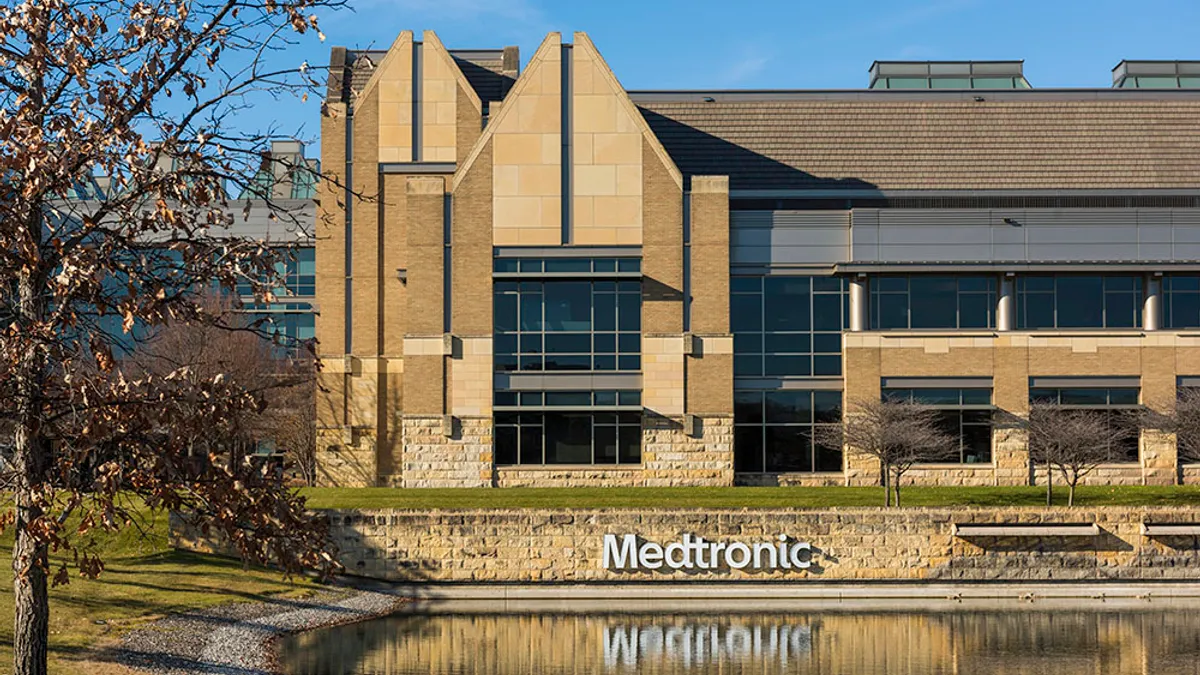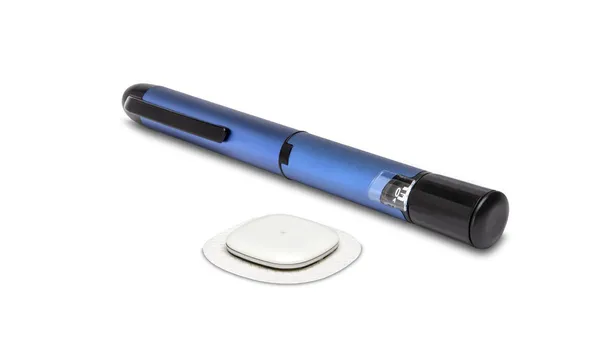Medtronic is competing in several fast-growing cardiovascular markets, and the medtech giant hopes recent product approvals will give it an edge in a new space that is garnering attention from Wall Street and industry rivals.
The company received Food and Drug Administration approval for its PulseSelect device in December, making it the first company to bring pulsed field ablation (PFA) — a procedure to prevent atrial fibrillation — to the U.S.
Medtronic expects the approval will contribute to a “fast-growing, $8 billion” ablation market, but it also faces competition from Boston Scientific and Johnson & Johnson. Boston received approval for its own PFA device in January, and J&J is developing its own version of the technology.
Medtronic is also working to carve out a new market in renal denervation, an ablation procedure intended to help reduce blood pressure as a supplement to drugs and lifestyle changes. The company and Recor both received approval for the first renal denervation devices last year, although an FDA advisory panel did not recommend Medtronic’s device as it had missed the primary endpoint in a clinical trial.
MedTech Dive spoke with Sean Salmon, Medtronic’s cardiovascular president, about the road ahead for these new devices and how the company views its competition.
This interview has been edited for length and clarity.
MEDTECH DIVE: Medtronic has been working on renal denervation for a long time, and you received FDA approval for that late last year. What work led up to the FDA decision?
SEAN SALMON: In 2009, when we first made the decision to invest in this little startup company called Ardian, it was intriguing. I’ve worked in the high blood pressure space before. I know just how unsatisfying the status quo is. It’s probably the largest public health problem we have. One in every two adults has high blood pressure right now — 700,000 deaths are either directly caused or associated with it in the U.S. alone.
A lot of these patients don't just have high blood pressure, they’ve got high cholesterol, diabetes, and they're taking 12 to 15 prescribed medicines every single day. A lot of those medicines, particularly hypertension ones, have side effects. It’s not an easy thing for patients to do.
The promise of having a procedure that you can do in a day. It lasts 24 hours a day, seven days a week and has no side effects. It’s not a cure. It’s not a panacea. It is a huge adjunct help to good lifestyle choices and adherence to medications.
What do the next steps look like? What are your expectations for getting insurance coverage?
There's a lot to do. CMS, in particular, has a couple of facilities for novel things that can come out that you can get temporary payment until you have enough evidence to satisfy a national coverage determination.
It's also important because a lot of private payers’ coverage policies are largely informed by what determinations CMS makes. We've got to do the short-term work of trying to get add-on payments, both for the inpatient and outpatient setting and for a national coverage determination through multiple different pathways, including those with evidence development.
On the private or commercial side, we've got to work state by state. We’ll be busy on reimbursement for a really long time.
Once we get that established, I think there's a lot [of work] to drive awareness among patients. There's a lot of interest, but it's also important that their family doctor knows what this is about. Training the doctors, making sure they know how to do the procedure, and helping them set up hypertension clinics, which will help sort out who is or isn't appropriate for something like this.
There’s been a lot of discussion recently about pulsed field ablation (PFA), and Medtronic got approval for the first device in the U.S. in December with PulseSelect. What market opportunity do you see for that technology?
The ablation market exists already. It’s about an $8 billion market that’s growing in the high-single digits. We play in a part of it. For atrial fibrillation, you can isolate the pulmonary veins, which are known to be the major source of where that arrhythmia comes from.
Pulsed field doesn't use any temperature. You’re not using hot or cold to create scar to block those irregular heartbeats from getting through. It uses a high field of electricity that we pulse out in pulse trains. What that does is it essentially pokes a hole in the cell membrane, water comes in and the cell dies. And what's interesting about that is you can tune that pulse train so that it's very specific to what you want to die out. No collateral damage — you don’t worry about the esophagus, you don't worry about the nerves that are right behind where you're doing all this ablation in the heart. The potential for complications goes way down.
Our clinical study beared that out. We had one of the lowest complication rates recorded at sub-1%. The energy is also really fast. Doing complex procedures that take lots of hours, five or six hours, can be done in a fraction of that time.
We have an organically developed program, which we call PulseSelect, that's what just got approved. We also acquired a program that does the more traditional point-by-point [ablation] but with a very novel catheter and a very novel mapping system, which is something we haven’t had all these years.
Other companies, including Boston Scientific and Johnson & Johnson, are working on their own PFA devices. How are you thinking about the competition?
When other competitors are doing it, you feel comfort that you're doing the right thing. A lot of what you want with good competition is to drive your own creativity, and you want help in building markets out, so awareness among patients and providers and even hospital administrators.
Being highly differentiated on products and taking some of the work steps out, that's how we win in the trenches.
Medtronic also received FDA approval for a new type of cardiac defibrillator. How does that work?
We keep reinventing ourselves in our oldest business, cardiac rhythm. The most recent iteration of that is a new way of doing the ICD market.
With an ICD traditionally, you have these leads that go into the heart. You have a big device under your collarbone on the side of your chest. Leads are great. They’ve been proven that you can deliver energy. Importantly, what you can do with a lead in the heart is you can pace the patient rather than just shock them.
That’s important because a shock is scary and painful. You don’t want to do that if you don't have to do that.
There is another device — Boston Scientific sells one — for what they call leadless. You reduce the potential for infection, but that can't pace. That device can only shock. It’s twice the size, and it doesn’t last as long.
The big innovation we had for what we call an extravascular ICD is that we tunnel a lead underneath the breastbone. And from that position, we're close enough that we can pace the heart. The device works like a traditional ICD. It's a big opportunity. That market today is $300-ish million dollars. But we think this technology isn't just going to compete with Boston Scientific. It's going to compete with the traditional leads in the heart market.





















